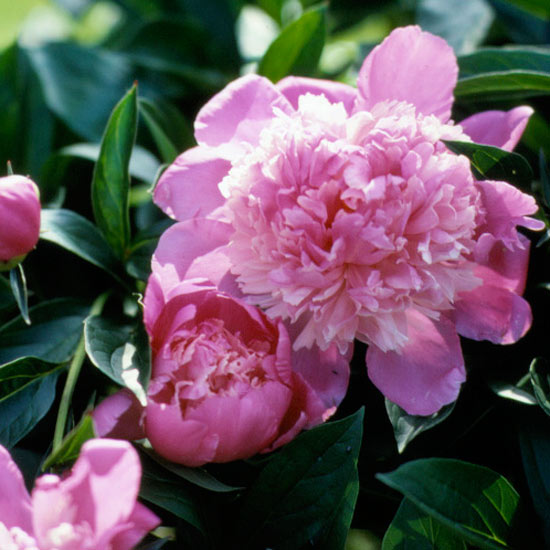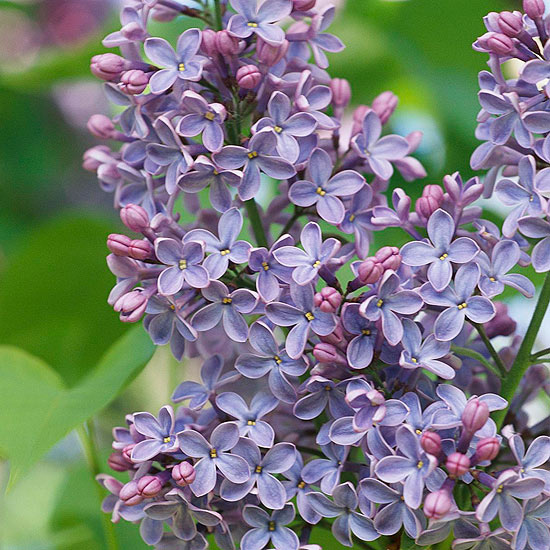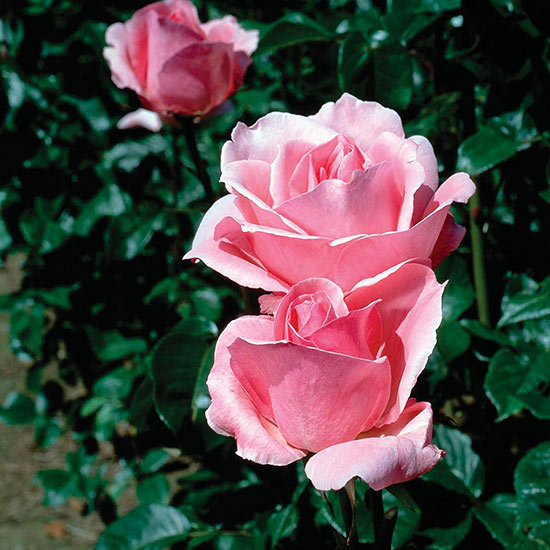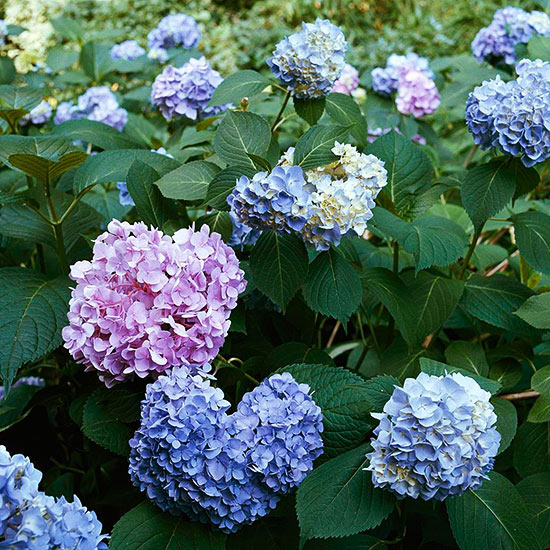






Peonies offer gorgeous flowers and wonderful fragrance -- and here's the biggest plus: They are easy to grow. Plant them and forget them -- until, of course, they pop into bloom. Then get your clippers ready for bouquets. Although peonies bloom just once in spring, they look nice all season -- like small green shrubs.
Learn how to grow gorgeous peonies in our Plant Encyclopedia.
continue reading belowWhere to plant: Peonies do best in full sun. Plant in Zones 2–8.
When to plant: Fall is the best time to plant. You can plant peonies right up to the time the ground freezes.
How to plant: Soak bare roots in water for about six hours, then plant in a location with welldraining soil (not too wet). The "eyes" should be 2 inches below the soil surface. Spacing: Allow 3–4 feet between each plant.
Peony care: Apply fertilizer when spring foliage is about 6 inches tall. Overfertilization may result in fewer flowers. Cut stems back to the ground in autumn after frost.
How to extend the bloom time: There are early- and later-blooming varieties. Plant some of each and enjoy flowers for several weeks.

Lilacs are touchstones of gardens gone by, of the sweetness of childhood, and of the fresh scent of a spring morning. With blooms ranging from deep purple to white, and an intoxicating fragrance, these spring bloomers are an old-fashioned favorite.
Learn the ideal growing conditions for lilacs in our Plant Encyclopedia.
Prune lilacs a few weeks after the flowers fade. Remove one-third of the oldest, thickest stems to rejuvenate the shrub. This encourages new growth and bigger blooms and allows air to flow through the bush so powdery mildew doesn't take hold. It also minimizes the risk of lilac borers, which attack old stems.
Maintain the shrub with a base of 9–15 stems of various ages. When suckers pop up, nurture three sturdy shoots about 1 foot apart, and cut off the rest.
Keep lilacs and their sweet scent in reach. Eight or nine feet of height keeps the flowers accessible.
Plant in well-drained soil that has a pH of about 7. Spring is the best time to plant lilacs. You can also add a handful of pelletized lime and compost to the hole, which should be big enough so the roots have room to spread.
Give lilacs at least four hours of sun a day and some elbowroom. Try to leave approximately 6 feet between shrubs.
Water plants the first season. After that, they shouldn't need irrigation except in a drought. And they don't need to be fertilized.
Snip off faded flowers regularly. This will help keep the bush looking tidy.

Roses are colorful, fragrant, history-rich plants, and are not as difficult to grow as you might think. Grow healthy, lush roses by following the tips below.
See the most popular rose varieties in our Plant Encyclopedia.
Plant new roses. Spring through fall are ideal times. Select varieties that suit your schedule. Hardy, disease-resistant shrub roses require the least care.
Look at the bud union. Many roses are a combination of two plants -- the top half is one variety grafted onto the root stock of another. The two meet at a swollen area called the bud union. In Zones 7 and below, bury the bud union at least 2 inches below the soil.
Prune when forsythia bloom. Remove weak or damaged canes and branches that are rubbing.
Provide water as needed. Roses thrive in moist, well-drained soil. When rain is scarce, water deeply once a week. Deliver water directly to the base of the plant to avoid getting the foliage wet.
Feed roses. Once a month from late spring to late summer is ideal.
Use fungicides. Spray regularly, if needed, to help prevent disease.
Deadhead plants. Remove faded blooms throughout the season to promote repeat blooming.
Stop deadheading. In October, stop removing dead blooms. This transitions plants into winter dormancy by letting rose hips form.
Prepare for winter. Spread a 12-inch-tall mound of mulch around each plant's base for insulation.

This midsummer flowering treat shows off blooms in an array of sizes, shapes, and colors. Flower heads come in big balls that measure 6–8 inches across, panicles shaped like a dollop of soft-serve ice cream, or flat umbels that bear the romantic name of lacecaps. And these shrubs bloom in a range of rich hues -- sun-kissed russet, soft violet, sky blue, lipstick pink, vanilla cream, and snowy white. Planting hydrangeas promises a good show in the garden, and their showy blooms are guaranteed to be a boquet favorite all summer.
See the many varieties of hydrangea in our Plant Encyclopedia.
When to plant: Transplant potted hydrangeas in spring or fall.
Where to plant: In cool climates, hydrangeas grow well in full sun or partial shade. Protect them from intense heat in warm climates by planting in a spot that gets morning sun and afternoon shade. Moist, welldrained soil is a must for good blooms.
When to prune: Pruning techniques are specific to the type of hydrangea. But for all types, remove dead and diseased stems as soon as you notice them. And trim broken or rubbing stems to prevent disease.
How to change flower colors: Blooms of bigleaf hydrangea (Hydrangea macrophylla) can be "colorized," but this process depends on the cultivar, soil type, and climate. Generally, alkaline soils (pH 6.5 and higher) produce pink blooms. Acidic soils (pH 5.5 and lower) promote blue blossoms. Sometimes an aluminum sulfate treatment is needed, in addition to acidic soil, to successfully turn flowers blue.
Copyright © www.100flowers.win Botanic Garden All Rights Reserved